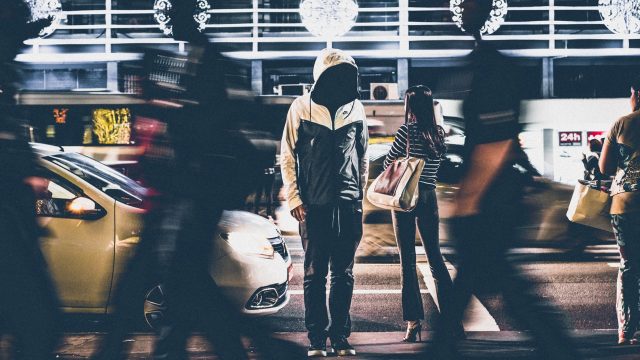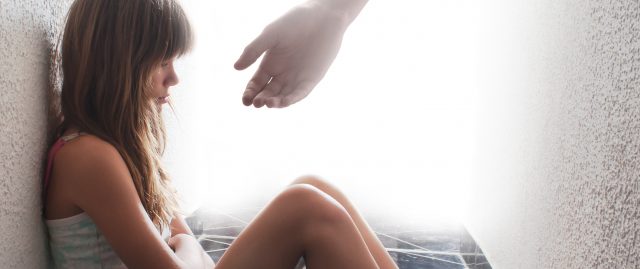While there are a great many resources to help and aid you in your recovery journey, the ultimate decision rests with you. A Scientific American article points out the following:
"But some in the field point out that many if not most addicts successfully recover without professional help. A survey by Gene Heyman, a research psychologist at McLean Hospital in Massachusetts, found that between 60 to 80 percent of people who were addicted in their teens and 20s were substance-free by their 30s, and they avoided addiction in subsequent decades. Other studies on Vietnam War veterans suggest that the majority of soldiers who became addicted to narcotics overseas later stopped using them without therapy."
https://www.scientificamerican.com/article/can-you-cure-yourself-of-addiction/
Again, there is no shame in seeking professional help or looking to other avenues for assistance in your recovery process. Below are some helpful concepts to keep in mind at this stage in your sobriety journey.
Drug and alcohol, as well as other types of addiction, are always rooted in some behavioral causes. This can be anything from a past trauma or experience, stress, the need for escapism because of environmental factors, depression, an addictive personality, or nearly any other variable you can think of. Identifying the source of your addiction is the first step to sobriety. Therapists can often assist with this process.

Talking to experts in the field of addiction recovery can greatly help you with your goal of sobriety.
There are many possible side effects of withdrawal, and some of them can be seriously dangerous or even deadly. Check with your physician or another expert about whether or not your recovery journey needs professional supervision.
It is essential when kicking an addiction to make value judgments about the positives and negatives of the behavior you are trying to avoid. Part of those value judgments can involve creating two lists: “reasons to use” and “reasons not to use”.
Fill out the first column with everything positive about using or engaging in the negative behavior - “It makes me feel good”, “it helps me sleep”, “it makes me productive”.
Fill out the second column with everything negative: “my addiction is hurting my family and I”, “my addiction is making me a different person”, “my addiction is killing me”. This is vital for the next step.

Being honest with yourself about the reasons you used drugs or alcohol in the past is a key step in recovery from addiction.
After preparing your lists, it is time to do some soul-searching. If you have been honest with yourself, you will quickly see that the benefits of substance abuse do not come close to outweighing the negatives. You will have to fall back on this value judgment daily during your path to recovery.
Friends, family, and even colleagues can all play an essential role in your recovery journey. Talk to your social group and tell them what you are going through (and if appropriate, what they can do to help you along the way). Try to find several contacts who you can call for support at any time if you need - group therapy programs will often assign “sponsors” who can be there at any time to help and support you.

Finding the right support from friends, family and peers can be extremely beneficial to your ultimate recovery.
This may not seem important to your recovery process, but it is. Wake up at a specific time. Go to sleep at one particular time, and take your meals at a specific time. The order and structure of your life can provide a powerful counteraction to the chaos that addiction brings.
No addiction, from sugar to heroin and everything in between, is managed without defeating cravings. Cravings are not voluntary. A craving is caused by your brain seeking to acquire more of something provided by the habit you’re kicking.
Cravings can be triggered by stress, a lack of sleep, unhappiness, pain (emotional or physical), an association with a person, place or thing, a smell, a memory, or any other number of stimuli. They can often be very intense, but the intensity fades quickly. Your cravings will be strongest at the very beginning of your abstinence and become weaker with time.

The initial urge to keep using drugs will go away with time.
How do we deal with cravings?
This is perhaps the most challenging part of recovery for many people. When the seemingly uncontrollable urge to use again arises, we must open our toolbox to fight it.
One such tool is “self-talk”. Remember the lists we made and the value judgment? Go over those again in your mind. Think about how much better your life will be clean. Think about how your addiction harms your friends and family, and even yourself. Think about the ground lost if you relapse and stay strong.
Another way to deal with cravings is to keep yourself busy. Clean your home, go for a jog, take out the trash. Occupy yourself mentally and physically, and you won’t have the time to focus and obsess over the substance of your desire.
Cognitive Behavioral Therapy is a potent tool to use in your journey. Cognitive Behavioral Therapy (referred to as CBT) allows you to identify and interrupt the patterns that lead to using and view things objectively and dispassionately. You can read more about CBT and addiction in one of our previous posts.
If your cravings become too intense to manage, call on your support group and talk it out with them. Friends and family may be able to pull you out of a negative mental state, and a sponsor from a group therapy class may be able to empathize and help you pull through your temptation.
As you continue down the path to recovery, you may relapse. You have not failed. You have only delayed success. Climb back onto that proverbial horse and try again. Identify factors that led to your relapse so that you may avoid them in the future. Expand your support network. Avoid people or places that lead to urges or cravings. Find professional help, if necessary. Your mental and physical health is worth it! While the decision to get clean is yours to make, you don’t have to fight that battle alone.
You may be wondering what a typical day in a drug rehab program looks like. Today we’re going to detail every aspect of a drug rehab program, from the minute you arrive to the minute you leave, we’ll cover it all!
One of the biggest reasons people struggle with addiction is a lack of support. Many people are too embarrassed to admit they have a problem, or simply don’t know who to turn to for help.
They are non-judgmental, qualified to help, and have experience treating people with similar addictions.

You are not alone in your addiction. Professional help is the best way to overcome your personal vices.
You may be surprised to find out that many people go to rehab for non-drug related reasons. Some examples are serious gambling and binge eating. While these are rarer, it should help you realize that there’s no reason to be embarrassed, since addiction comes in many forms.
One of the most powerful ways to beat addiction is to keep yourself busy, and they definitely adhere to that in rehab.
In rehab, you will generally follow the same schedule every day. This often includes waking up early and eating breakfast, group and personal therapy, exercise and chatting, and more.
The main goal of therapy is to get you over that initial first hill during your recovery process. The hardest part of fighting an addiction is the first few days, as this is when most relapses happen.
Once your body has detoxed of whatever substance you are addicted to, you will be able to think more clearly and function better. At this point, it really comes down to having a support group and knowing how to fight off the cravings you will experience.
On the plus side, once you have rehabbed from your withdrawal symptoms, you will be better equipped to fight through your cravings without the physical effects - which can feel impossible to overcome at times.
Up until this point, you may have thought of rehab as a type of “jail” with therapy, but it’s important to note that this is not the case at all.
There are many types of therapy offered, and it’s probably not what you think.

The beginning of any endeavor is typically the hardest part. Drug rehab programs are designed to help you in the early stages of addiction recovery.
As you can see, there are a wide variety of ways you can empower yourself to fight through your addiction. Each of these types of therapies is intended to help increase your mindfulness and develop more control over your own mind and impulses.
In addition to the above therapies, there is often a “traditional” therapy, where you sit down and have a one-on-one chat with a therapist.
These sessions may sound intimidating, but they are incredibly helpful if you can let yourself be open to them.
Your therapist will listen to your history, feelings, thoughts, and more, and then help devise a treatment program tailored to your needs.
These therapy sessions are often extremely helpful, as they can help get to the bottom of why you feel the urge to use.
For example, many people who become addicted to drugs use them to forget or cope with previous unhealed trauma or stresses. Your therapist can help you work through these past traumas and provide feedback and tips to start the healing process. Drugs may seem to dull the pain, but unfortunately, they are not actually fixing anything, only delaying your healing.
Another practice you may find helpful is the group therapy sessions that most rehab centers offer. These are often very different than group therapy sessions outside of rehab centers because everyone in the rehab center is strongly fighting at that moment to overcome addiction.
It can feel comforting to know that no one is there judging you, since you are all in the same place at the same time, going through the same struggles - no matter what your addiction may be.

A typical day at a drug rehab facility is nothing to worry about. Most are comfortable, with your personal care in mind.
One concern that many people have prior to checking into rehab is the fear of going through horrible physical effects when they stop taking the drug they are addicted to.
This is especially true with narcotics and benzodiazepines, as they can have serious life-threatening effects when stopping. The good news is that most rehab centers are equipped to deal with these issues, and know exactly how to help.
Many rehab centers employ medical doctors that are very familiar with the detox and withdrawal process from common drugs. The doctor will be able to prescribe certain medications that will slowly wean your body off of the substances you are addicted to.
This means that you won’t have to experience some of the painful side effects of withdrawal that could happen if you try to quit cold turkey.
It’s important to note that serious substance addictions should not try to be treated by yourself. A serious addiction to dangerous drugs can be life-threatening if you try to quit cold turkey without the supervision of a doctor.
Outpatient rehab programs are perfect for someone who is mildly or moderately addicted to drugs. These are also an option for someone who is being discharged from a rehab center and feels they are strong enough to overcome their addiction.
These programs focus on getting you through the detox period safely and empowering you to continue the fight against your addiction.
These will generally involve a 30-minute visit with a doctor for the first week as they monitor your progress and symptoms. This is the recommended way to quit if you don’t feel like checking in to rehab, yet feel you need some help quitting drugs, or are afraid of withdrawal symptoms.
Overall, there are thousands of excellent rehab centers across the world. It’s important for you to know that you’re not alone in your fight against addiction. Keep pressing forward and use every resource available to you!
Confidentiality has always been a key component of rehabilitative services. The HIPAA law (Health Insurance Portability and Accountability Act, signed by Bill Clinton in 1996), guarantees medical privacy, even for minors in many cases. But does it apply to rehabilitation for minors? Can a minor receive substance abuse rehabilitation without their parents finding out?
The short answer? Maybe. By HIPAA, minors are allowed to make their own informed consent decisions about health care without parental supervision, guidance, or involvement. However, there is a statute in HIPAA that states each state may make their own decisions and enact their own rules. This has led to a dizzying patchwork of regulations and rules from state to state.
Below is a table that identifies each state’s specific action toward both drug treatment and mental health treatment.
| State | Drug Treatment | Mental Health Treatment | ||
| Inpatient | Outpatient | Inpatient | Outpatient | |
| Alabama | Minor | Minor | Minor (≥ 14) | Minor (≥ 14) |
| Alaska | No Specific Law | No Specific Law | No Specific Law | No Specific Law |
| Arizona | Either (≥12) | Either (≥12) | Parent | Parent |
| Arkansas | No Specific Law | No Specific Law | No Specific Law | No Specific Law |
| California | Either (≥12) | Either (≥12) | Minor (≥12) | Minor (≥ 12) |
| Colorado | Minor | Minor | Minor (≥15) | Minor (≥ 15) |
| Connecticut | Either | Either | Either(≥14)a | Minor |
| Delaware | Parent | Either (≥14) | Parent | Parent |
| DC | Minor | Minor | Parent | Minor |
| Florida | Either | Minor | Parent | Minor (≥ 13) |
| Georgia | Either (≥12) b | Minor | Parent | Either (≥ 12) |
| Hawaii | Minor | Minor | Parent | Minor |
| Idaho | Either | Either | Either (≥14)a | Either |
| Illinois | Minor (≥12) | Minor (≥12) | Either (≥ 16)a | Minor (≥ 12) |
| Indiana | Minor | Minor | Minor | Minor |
| Iowa | Either | Either | Minor/Bothc | Minord |
| Kansas | Minor | Minor | Either (≥14) | Either (≥ 14) |
| Kentucky | Either | Minor | Minor (≥ 16) | Minor (≥ 16) |
| Louisiana | Minor | Minor | Minor | Minor |
| Maine | Bothb | Minor | Minor | Minor |
| Maryland | Either | Minor | Either (≥ 16) | Either (≥ 16) |
| Massachusetts | Minor (≥ 12) | Minor (≥ 12) | Either (≥ 16)a | Either (≥ 16) |
| Michigan | Either (≥ 14)f | Either (≥ 14) | Either (≥ 14) | Minor (≥ 14) |
| Minnesota | Minor (≥ 16) | Minor(≥ 16) | Minor (≥ 16) | Minor (≥ 16) |
| Mississippi | Parent | Minor (≥ 15) | Parent | No Specific Law |
| Missouri | Either | Either | Parent | Parent |
| Montana | Minor | Minor | Either (≥ 16) | Either (≥ 16) |
| Nebraska | Either | Either | Either | Either |
| Nevada | Minor | Minor | Parent | Parent |
| New Hampshire | Minor (≥ 12) | Minor (≥ 12) | Either | Either |
| New Jersey | Minor | Minor | Parent | Parent |
| New Mexico | Minor(≥ 14) | Minor (≥ 14) | Minor (≥ 14) | Minor (≥ 14) |
| New York | Either | Either | Either (≥ 16) | Either |
| North Carolina | Parent | Minor | Parent | Minor |
| North Dakota | Minor (≥ 14) | Minor (≥ 14) | Parent | Parent |
| Ohio | Minor | Minor | Parent | Minor (≥ 14) |
| Oklahoma | Minor (≥ 16) | Minor | Minor (≥ 16) | No Specific Law |
| Oregon | Minora | Minor (≥ 14) | Parent | Minor (≥ 14) |
| Pennsylvania | Either | Either | Either (≥ 14) | Either (≥ 14) |
| Rhode Island | Either | Either | Both | Both |
| South Carolina | Minor (≥ 16) | Minor (≥ 16) | Minor (≥ 16) | Minor (≥ 16) |
| South Dakota | Either | Either | Both (≥ 16) | Both (≥ 16) |
| Tennessee | Either (≥ 16) | Either(≥ 16) | Minor (≥ 16) | Minor (≥ 16) |
| Texas | Either (≥ 16) | Either (≥ 16) | Either (≥ 16) | No Specific Law |
| Utah | Parent | Parent | NoSpecific Law | No Specific Law |
| Vermont | Minor (≥ 12) | Minor (≥ 12) | Minor (≥ 14) | Minor (≥ 14) |
| Virginia | Both (≥ 14) | Minor | Both (≥ 14) | Minor |
| Washington | Parent | Minor (≥ 13) | Minor (≥ 13) | Minor (≥ 13) |
| West Virginia | Minor | Minor | Both (≥ 12) | Both (≥ 12) |
| Wisconsin | Parent | Either (≥ 12) b | Both (≥ 14)g | Both (≥ 14) |
| Wyoming | No Specific Law | No Specific Law | No Specific Law | No Specific Law |
Note. Parent = Parental consent only required; Minor = Minor consent only required; Either = Either parental or minor consent; Both = Both parental and minor consent required; No Law Found = No specific law was found addressing that particular form of treatment. If a state specified an age at which a minor was considered mature, it is indicated in parentheses after the type of consent required.
Also Read: Choosing the Right Teen Drug Rehab Center

Again, a wildly varying and confusing array of laws. Let’s break them down to understand what’s being said here.
We have two columns. One labeled “Drug Treatment” and the other “Mental Health Treatment”. Let’s analyze the state of Virginia.
In Virginia, inpatient therapy (rehab) for addiction-related issues requires both the consent of the parent and the child (as long as the child is above 14) are required. The same applies to inpatient therapy with the minor being at or above the age of 14.
However, outpatient therapy for both substance abuse and mental health issues remains solely the domain of the child in question. There is no consent or notification of the parent or guardian required.
In the state of Rhode Island, the minor or guardian may send the minor to rehab (there is no age floor). However, to send the minor to mental health treatment of any kind) requires the consent of both the guardian and the minor.
In New Hampshire, only the minor can decide to go to rehab. Both the minor and the guardian may make the decision to go to mental health, be it, inpatient or outpatient.
In Utah, the parent has exclusive rights over the minor with regard to drug and alcohol rehabilitation. However, there is no actual law on the books regarding mental health aid; it is presumed that the minor may attend without parental supervision or guidance.
For the sake of ease of use, I have divided the entire US into two basic categories - Private and Non-Private.
Private states include all states listing minors as being the sole decision-maker under both fields (inpatient and outpatient) of drug rehabilitation. Most of them have separate rules regarding mental health. Please refer to the table above, if you have any questions.

These are the states of Alabama (over the age of 14), Arizona, (over the age of 12), , Colorado (over the age of 15), Connecticut, Florida, Washington DC, Georgia (over the age of 12), Hawaii, Idaho, Illinois (over the age of 12), Indiana, Iowa, Kansas, Kentucky, Louisiana, Maryland, Massachusetts (over the age of 12), Michigan (over the age of 14), Minnesota (over the age of 16), Missouri, Montana, Nebraska, Nevada, New Hampshire (over the age of 12), New Jersey, New Mexico (over the age of 14), New York, South Dakota (over the age of 14), North Dakota (over the age of 14), Ohio, Oklahoma (over the age of 16), Oregon (over the age of 14), Pennsylvania, South Carolina (over the age of 16), South Dakota, Tennessee (over the age of 16), Texas (over the age of 16), and finally Vermont (over the age of 12). These states are all private for minors seeking rehab.
Rhode Island and Maine are fringe cases. They require parental consent unless the doctor evaluates that informing the parents about the rehab activity would terribly harm the recovery process.
Delaware requires parental consent for inpatient, but not outpatient care. Mississippi, North Carolina, Virginia, Washington, and Wisconsin all require parental permission for inpatient treatment.
Alaska and Wyoming do not have specific laws on the books, and so, therefore, should refer to following federal HIPAA law on the subject.

Unfortunately, this law and its state applications are only the tip of the iceberg. There are still more considerations. For example, if there is a charge or a bill associated with the services, the guardian may discover what has transpired. Correspondence, phone calls, & other methods of communication may be intercepted and used to pressure or otherwise identify the minor.
The best advice is to consult a doctor or addiction recovery professional and follow their advice. Though the framework for an independent addiction recovery journey is there, it differs greatly from state to state and in each circumstance
The factors determining whether a minor can access drug rehab without parental consent vary depending on the laws and regulations of the specific jurisdiction. In some cases, minors maybe able to access drug rehab without parental consent if they meet certain criteria, such as demonstrating maturity or being emancipated. Additionally, the severity of the addiction and the potential risks to the minor's health and safety may also influence whether they can access treatment without parental consent. However, it's important to note that laws regarding minors' access to drug rehab without parental consent can vary widely, so it's advisable to consult legal counsel or a qualified healthcare professional for guidance specific to the individual's situation and location.
In some cases, it is possible for a minor to seek drug rehab without their parents' knowledge or consent, depending on the laws and regulations of the specific jurisdiction. Some states have laws that allow minors to consent to certain medical treatments, including drug rehab, without parental involvement if they meet certain criteria, such as demonstrating maturity or being emancipated. Additionally, confidentiality laws may protect minors' privacy rights in seeking healthcare services, including drug rehab. However, it's essential to consider the individual circumstances and seek guidance from legal counsel or a qualified healthcare professional to navigate this complex issue effectively and ensure the minor's safety and well-being.
For minors who are unable to access drug rehab without parental consent, there are alternative options available to seek support and assistance. One option is to reach out to trusted adults, such as teachers, school counselors, or other family members who may be able to provide guidance and assistance in accessing resources for treatment. Additionally, support groups or hotlines specifically designed for adolescents struggling with substance abuse can offer confidential support and guidance, connecting them with resources and treatment options that may be available without parental consent. Seeking counseling or therapy from a qualified mental health professional can also provide valuable support and assistance in managing substance abuse issues, even if parental consent is required. Ultimately, the key is to explore all available options and seek support from trusted individuals or organizations to address the minor's needs and ensure they receive the help they require.
Minors and their parents can find more information and support regarding drug rehab options and confidentiality issues from various sources. One option is to consult with healthcare professionals, such as pediatricians, counselors, or addiction specialists, who can provide guidance and resources tailored to the individual's needs. Additionally, reputable organizations and websites dedicated to substance abuse treatment, such as the Substance Abuse andMental Health Services Administration (SAMHSA) or the National Institute on Drug Abuse(NIDA), offer valuable information and resources for minors and their parents. Local community health centers, schools, or mental health clinics may also provide support and assistance in navigating drug rehab options and confidentiality issues. It's essential to seek information from reliable sources and consider consulting legal counsel or advocacy organizations specializing in minors' rights and healthcare confidentiality to ensure a comprehensive understanding of available options and rights.
As we outlined in part 1 of this series, body brokering has been made illegal at the Federal level with the passage of the 2018 SUPPORT act. However, this bill contains an unfortunate loophole. This allows drug rehab centers to continue to use body brokering to recruit new patients into their facilities.
The 2018 SUPPORT for Patients and Communities Act allows for “certain payments to bona fide employees and independent contractors”. In this sense, eliminating kickbacks to just anyone off the street, like the drug rehab bounty hunters who were looking for kids and young adults with insurance coverage. Now the same people that brokered patients who were struggling with addiction, can become hired, (on salary) from a drug rehabilitation clinic. As long as they aren’t paid per head, there is technically not a “kickback” taking place. This is what is keeping much of the practice of body brokering alive and well in today’s drug rehabilitation industry.
As mentioned earlier, some of these “recruiters” are even licensed insurance agents and can sign you up for insurance if you don’t have coverage. Let me remind you that many of these people are not in the game to truly help people overcome their addiction. Maybe most of them really think that’s what they are doing. Maybe they think they are helping others, but when motivated by money and greed, the consequences of their actions can be deadly. Remember that to these businesses, relapse is much more profitable than sobriety and recovery.

This was a comment from a post on a private Facebook group. And yes, you read that right… A recruiter, who took a young woman out of state to a rehab facility, got her involved in the relapse to rehab shuffle, went to her funeral and did the same thing to others. This person ended up recruiting 5 more young addicts. Is this not madness yet? Why aren’t the insurance companies doing anything about this?
That’s a great question, that doesn’t have an answer yet. While some groups have organized, creating websites concerning ethics in addiction treatment, I can tell you that there definitely are ethical addiction treatment providers out there. I should know, I work with a handful of them.
When substance abuse treatment is provided with the best intentions, treatment does work. It can help people turn their lives around, but recruiters can be very persuasive with illegal inducements to re-enter treatment. This is a system that encourages people to inflict self-harm, relapsing just to restart their insurance coverage.
This happens all the time, someone who is in recovery goes to a 12 step meeting as a method of continuing aftercare upon the completion of their drug rehabilitation program. Many addicts graduate the treatment program and begin staying at sober living homes. Or, they relapse and enter the drug rehab shuffle at the beginning again, going through detox, inpatient rehab then on to a sober living home. Sometimes this cycle repeats indefinitely.

Some unscrupulous marketers will attend 12 step meetings regularly and try to talk people into either relapsing for treatment or entering their sober living home. Since they are bona fide employees of the company, technically, their work doesn’t produce a “kickback”. Many recruiters are paid salary because that’s just how you get around the law.
Since I don’t personally know any rehab recruiters, I can only assume that they have monthly quotas to meet. A certain number of heads to fill the beds at the rehab facility, otherwise, they’d be fired for not producing results. With the average client bringing in roughly $800 per day, the stakes are high. So, how does the $35 billion dollar a year addiction treatment industry keep growing for its investors? By finding more and more people who need treatment.
With drug addiction rates and drug overdose deaths skyrocketing in the United States, the market is definitely there. Drug rehab has even (inadvertently) created its own lifestyle around their existence.
Many drug rehabilitation centers around the US are rapacious. Most business entities are. It’s the nature of capitalism after all. That’s how jobs are created, so our economy keeps growing and moving forward. In healthcare enterprises, this frequently creates an incentive for putting profits above the needs of people. Unfortunately, this is precisely what happened to the addiction treatment industry, in a very short amount of time.
New patients to drug rehabilitation centers typically enter treatment, because they want to get better. In places like Florida and California, (where most of the nation’s rehab centers are located) the need to find new patients became urgent. Body brokers and rehab recruiters began offering inducements to people from out of state that needed treatment. They would buy the airline ticket or arrange travel to their rehab facility, completely free to the patient.
At first, this seems like a wonderful opportunity for the patient - to finally have access to treatment. It also offers them a chance to escape their daily routine, so they can focus on recovery. This is all fine and dandy until their insurance coverage runs out. Many of these patients get kicked out of rehab, onto the streets, with no money and no return ticket home. Many become homeless and begin to use drugs again. They know if they go out and get high, they can become eligible for treatment again, and thus, the rehab shuffle begins.

Many young addicts are lured into a revolving door of addiction treatment and sober living arrangements by drug rehab recruiters.
For many young adults in the US, rehab has become an alternative to homelessness. Rehab is also an alternative to working some shitty fast-food job, where you barely scrape together enough money every month to eat and pay for rent. Economic opportunity for young people in this generation isn’t the same as it was for their parents. Rent is astronomically high right now. College tuition has increased by an average of 234% since 1990. Hell, even if you go to college, it is still hard to find a decent paying job.
It seems that the odds are not stacked in your favor. With the lack of economic opportunities for today’s youth, it’s no wonder why so many of them end up depressed while turning to drugs and alcohol to self-medicate their inherent feeling of hopelessness.
Once a kid enters a drug rehab facility, seeing how easy it can be, it’s hard for them not to crave the ease of being institutionalized. Body brokering exasperates that desire for many young adults, offering them "the easy life" through inpatient rehab. This is where all of your basic life’s needs are met, while your parent’s insurance policy covers the bill. That is until your benefits run-out, or you turn 26 and are kicked off of your parent’s insurance plan. Sadly, a lot of young adults find themselves in this situation: homeless, unable to find a job, and addicted to drugs. It’s undeniable that this relapse-to-rehab-shuffle has greatly contributed to the growing homeless populations in many American cities.
You can read part 3 of our expose' here:
https://strugglingwithaddiction.com/2019/03/10/drug-rehab-marketing-recruiters-body-brokers/
Nearly everyone is exposed to drugs at some point in their life, whether it be at school, work, with friends, or something you seek out on your own.
One hot topic of debate has been whether we can predict who potential drug addicts are before they become addicted.
In case you’ve been living under a rock, or are one of the lucky FEW people in the United States who hasn’t been impacted by the opioid epidemic, or drug overdose crisis in some way, you may not have come across the term “body-brokering” before. Body brokering, by large part has been used to keep the addiction treatment industry afloat. Many drug rehabilitation centers still use body brokers, or "drug rehab recruiters" to fill their beds with patients. This is how the addiction treatment industry makes money, of course, and there’s absolutely nothing wrong with that, right?
Sadly, making money off of health care services in the United States has its definite share of adverse side-effects. These negative effects occur often within the addiction treatment industry, especially when access to treatment can quite literally mean life or death for the patient. The sad, ugly secret in the drug rehab industry, is that it’s more profitable to have people relapse than it is to actually help them get clean. This fact has helped foster much of the greed that is currently thriving in the rehabilitation industry while giving it a bad name.

Due to lax regulatory oversight of a thriving industry, many are taking advantage of our nation's most vulnerable population.
While there certainly are reputable addiction treatment centers operating in every community across the nation, the bad actors seem to be getting the most media attention. Drug rehabilitation clinics who actually do a good job, are forced to compete with a thriving industry of crooks who are not out to help people. They just want your insurance money. The practice of body brokering has tainted the public’s perception of the addiction treatment industry as a whole.
Hundreds of stories from various local and mainstream media outlets have brought attention to the practice of body-brokering. Perhaps the first national attention to body brokers came out with the “Florida Shuffle” stories that began surfacing after the passage of 2010’s Affordable Care Act. The ACA, or “Obamacare” mandated that any health insurance plan must cover substance abuse treatment and mental health services as one of the ten “essential health benefits”. This has opened up the doors to, what some call “the wild west” of addiction treatment.
It’s literally “anything goes” in today's addiction treatment industry. Thousands of different treatment options across all 50 states. All with very little oversight or regulation within the industry. This leaves the consumer, the addicts, the people that need the most help, in the dark about which program will best suit their individual needs. Not only which one offers the best treatment, but also, which one isn’t just pilfering money from the health insurance company while offering little, to no actual treatment services at all.
To keep people coming in with health insurance plans, many individual treatment centers would pay kickbacks to people known as body brokers, for the “referral” of the patient. These are patients who’s insurance can pay the rehab facility upwards of $20,000 per month, or even more for inpatient treatment and related services. As such, the kickback became a lucrative enterprise for someone who knew their local drug scene.

Luring vulnerable young adults who are struggling with addiction has become a big business in America.
Many drug rehab recruiters are recovering addicts themselves. Their personal experience with addiction can actually be beneficial to the business. They typically know where to go, where the drug activity is taking place and they know how to sell the idea of treatment to someone, even if they don’t necessarily want to quit using drugs. They tell them it’ll be like a vacation. Instead of living on the streets, you’ll have a bed and warm meals for the next month or two.
Some drug rehab recruiters even offer to pay out of state airline travel, then they’ll give you cash, groceries, cigarettes, cell phones and a free place to stay. Some even brag about having ties to the music and film industry in Southern California, to lure in new clients. All they had to do was go down to skid row, find a person who was using drugs and either had or was eligible for a decent health insurance policy.
Some body brokers would even offer to pay the insurance coverage costs for the first month, so they could get them into a rehab center. I’ve even heard of some rehab recruiters being licensed to sell insurance in California. Talk about doubling-down on your profit margin, right? Once they get a patient into a treatment facility, the money just starts pouring in. The extent to which the opportunities for greed and corruption have been covered extensively, by numerous news outlets and blogs. For those who are unaware, the rehab shuffle has become the reason so many people have died, trying to get treatment.
Body brokers have been reported to pay cash to prospective recruits, in order for them to buy drugs. In some instances, body brokers would even provide the drugs to patients themselves, so they could relapse, test dirty on a UA and their insurance would start over. They’d put them up in a motel for a night or a weekend, tell them to have fun (while relapsing) and they’d be back later to take them to a detox facility.
Certainly, some people got treatment, stayed clean and that was the end of their rehab story. They recovered, but a large number of clients end-up repeating this process. Go to rehab, get clean, relapse, go to rehab, relapse again, etcetera…
The big problem here is that many people would relapse once and then die from a drug overdose. This happens far too often, because people don’t realize that they had developed a tolerance to the drugs over the course of their addiction. They get clean at rehab for 30 or 60 days and when they relapse, they think they can use the same amount of the substance as they did before. Without the tolerance their body had built up, the dose can be too much for the person to handle. They overdose and die, and that’s the unfortunate end to their story.
Stories like these have sadly become the definition of the Florida shuffle, or what I prefer to call, the “rehab shuffle.” I call it this because the problem is not exclusively limited to drug rehabilitation facilities in the State of Florida. Other states like Arizona and California have dealt with this problem to a similar degree. When you have a city, like Los Angeles with over 1,000 different addiction treatment centers operating currently, competition for new clients can be fierce. Business owners get desperate, ethics and morals are ignored. All the while, vulnerable and fragile human lives are at stake.

As the 'opioid epidemic' ravages urban & rural communities in the United States, drug rehab recruiters are using questionable morals to find new clients.
On October 24th, 2018, President Donald J. Trump signed the SUPPORT for Patients and Communities Act into law. This was a massive set of over 120 different bills from congress, aimed at fighting the opioid epidemic. An important part of this legislation, (in regards to body brokering) was the “Eliminating Kickbacks in Recovery Act (see 18 U.S.C. §220). This act was aimed directly at the substance abuse treatment industry, its employees and private, third-party body brokers.
This bill extended the federal anti-kickback statute (AKS) [see: 42 U.S.C. 1320a-7b(b)] to regulate private clinical treatment facilities, laboratories, or sober living homes. The original AKS statute prohibits any exchange of remuneration (anything of value) for referrals to services, payable by a federal program, like Medicare or Medicaid. Now, with the passage of the SUPPORT Act, anti-kickback laws can apply to programs paid for by private insurance, but only those in the drug rehabilitation field.
The stiff, $200,000 dollar fine and the possibility of up to 10 years in prison for providing or receiving a financial incentive for referring patients to a drug treatment facility should have solved the problem, right? Actually, because this law was directly aimed at ending the practice of body-brokering in the drug rehabilitation industry, it seems everyone thinks that patient brokers are now a thing of the past. This statement couldn’t be farther from the truth, as we explain why in part 2 of our “Drug Rehab Recruiters” series.
Drugs are an increasingly prevalent topic in today’s world, and for a good reason. It seems like just about everyone knows someone who has fallen into the addiction of drug abuse.
A relapse into abusing drugs and alcohol is a very normal part of most people’s recovery from their substance use disorder. If you have completed a successful addiction treatment program, experienced a period of sobriety, and then fell into a full-blown relapse, please be aware that you are not alone. Experiencing a relapse is not uncommon. Most psychiatric doctors and other professionals in the field of addiction treatment will tell you that relapsing is a normal part of most patient’s recovery efforts. If your cravings and thought patterns turn into using drugs or alcohol again, it does not mean that you have failed at recovery. It is essential for you to maintain hope, as there are many resources available to help you. It is your reaction to the event of a relapse that is critical to your end goal of long-term sobriety. Express forgiveness to yourself or your loved one who may have recently relapsed. Learning from your mistakes is the best way to ultimately heal, as the path to sobriety is a long and difficult one. We know because we’ve been there.

“Treatment of chronic diseases involves changing deeply rooted behaviors, and relapse doesn’t mean treatment has failed.”
–National Institute on Drug Abuse (NIDA)
How common is a relapse for people who go through a drug rehab program?
It is estimated that 40-60 percent of people who maintain sobriety through rehab, treatment, and recovery will relapse into heavy use, while 70-90 percent will relapse and use again at least once. In the medical field, a relapse used to be treated as an uncommon thing, but this has largely changed due to the advances in behavioral science and addiction therapy. Sadly, many addicts are stigmatized by society as hopeless drug fiends or treated with the perception that they are a bad person for their substance use. Many of us here in the addiction treatment industry are advocating a different perspective. With addiction being a curable disease, you could compare it to the relapse rates of people with other medical problems such as diabetes, high blood pressure, or asthma. The rate of relapse into these common medical diseases is close to the same as for people with a substance abuse disorder. Treating this as a medical condition will help erase the stigma associated with drug and alcohol abuse.
As we have seen the overdose epidemic explode in the United States, it is important for us to begin treating this as a serious medical condition, not a criminal activity reserved only for the ‘bad people’ in society. As you are reading this now, most of us know someone dearly who has struggled with some form of substance abuse. While we look to help those closest to us, deep down inside we know there is still a good person underneath the surface of their drug or alcohol addiction.
It is estimated that nearly 72,000 people in the United States died from a drug overdose in 2017. That’s nearly 200 people who die, each and every day. – Centers for Disease Control (CDC)
Warning: your drug tolerance levels will change. Relapsing is an extremely dangerous situation.
It is extremely important to note here that many who relapse will overdose their first time because they think they can do as much of the drug as they had been doing before they went through detox and a period of sobriety. Simply put, your body cannot handle as large an amount of the drug, even though they had built up a tolerance over their period of substance abuse. Your tolerance has changed through recovery and you might not be able to handle the “usual dose” as you have in the past and you could immediately die. We cannot stress this enough, so please keep this in mind throughout your post-recovery stage as most people do not plan to have a relapse.
Learn more about relapse prevention and the specific relapse triggers to avoid from Riverside, California drug rehab: https://10acreranch.org/why-do-i-keep-relapsing-5-ways-to-become-stronger/
Suboxone® is a prescription medication, used in the treatment of opioid and heroin addictions. Every single day in the United States, 130 people die from an opioid overdose, on average. This is according to the Centers for Disease Control (CDC), which closely monitors the worsening opioid epidemic. Drug overdose deaths are arguably the most alarming health care crisis that our nation has ever seen. Today, more people die from a drug overdose than do from car accidents, firearms, homicides, or HIV/AIDS. Drug overdoses are the leading cause of death for Americans under the age of 50. Fueling the dramatic increase in deaths that result from drug abuse is prescription and non-prescription opioids including heroin and oxycodone.

Prescription drugs like Oxycontin, Vicodin or Percocet were once marketed as non-habit forming and many doctors prescribed them for all types of pain. Many of these patients became addicted to the painkillers and some would even turn to street drugs like heroin or fentanyl, once their prescriptions ran out. Opiates are known for having painful, excruciating withdrawal symptoms which makes it hard to quit, even when the person really, really wants to.
Suboxone can significantly aid in drug rehabilitation efforts, as the United States faces an overwhelming opioid overdose epidemic.
Suboxone is a prescription medication that combines buprenorphine and naloxone. This life-saving medication has been shown in numerous studies to ease opiate withdrawal symptoms in patients who are beginning their recovery from addiction. These studies also highlight that the medication is beneficial in helping to reduce the likelihood of relapse in many of the patients who use it as a part of their addiction treatment program. Suboxone is known as a medication-assisted treatment (MAT), which is used in conjunction with cognitive behavioral therapy and other approaches to addiction treatment.
In 2017 over 70,000 Americans died from a drug overdose according to the Centers for Disease Control. Most of these overdose deaths were fueled by an ongoing opioid epidemic that appears to only be getting worse as time goes on. Opioids were linked to 47,600 of these deaths (67.8% of all drug overdose deaths). With the United States battling this epidemic, the need for effective treatment options is at an all-time high.
Suboxone and buprenorphine are relatively new, yet they are an effective form of evidence-based treatment for addiction.
The US Food and Drug Administration approved Suboxone® to treat opioid dependence issues in patients in 2002. Because Suboxone is itself an opioid drug, it should only be taken with a prescription from a doctor, under close medical care and supervision at an addiction treatment facility.
Since suboxone and buprenorphine do exhibit the potential for abuse and misuse, they should be considered carefully, as a part of your ongoing recovery efforts. Much like methadone and naltrexone, Suboxone or buprenorphine medications like Subtex® should only be a temporary form of treatment for addiction to opioids. A step-down approach or drug-taper, should be followed carefully to prevent a replacement addiction from occurring. Tapering off medication is when the patient’s dosage is incrementally decreased, over time to eventually wean patients off of habit-forming drugs.

How does Suboxone help people recover from opiate addiction?
Helping to suppress cravings and often painful withdrawal symptoms, Suboxone has the potential to make the process of detox and recovery from opioid addiction much more manageable. Suboxone and buprenorphine have some distinct advantages over other medication-assisted treatments like naltrexone or methadone. Suboxone contains both buprenorphine (an opioid partial-antagonist) and naloxone (an opioid antagonist). The buprenorphine will allow the brain to think it is receiving opioids, while the naloxone component blocks the euphoric “high” associated with opioids. These components, in combination, will typically last for approximately 24 hours. Success rates, as measured by retention in treatment and one-year sobriety have been reported as high as 40-60% in some studies.
Learn more about the long term effectiveness of Suboxone in addiction treatment from Houston, Texas drug recovery: https://morethanrehab.com/2019/03/07/what-is-suboxone/
Addiction and mental health issues are deeply connected to the human brain. Roughly one in five adults in the United States was living with some form of mental illness, according to the National Institute of Mental Health. According to NIMH estimates in 2017, there were 46.6 million Americans living with at least one type of mental health problem. Many people turn to drugs or alcohol in an attempt to self-medicate their inner feelings from clinical depression, PTSD, bipolar disorder, schizophrenia, anxiety, or other types of mental illness. Sadly, these people will go on living their lives, without a proper diagnosis from a doctor. Many of these patients will turn to drugs or alcohol as a coping mechanism for their internal mental or emotional struggles.

Behavioral therapy, support groups, and other mental health services used to treat a dual diagnosis.
In the field of addiction treatment, when someone has a substance use disorder, coupled with another form of mental health issue, we call this a co-occurring disorder or a dual diagnosis. Sometimes addiction treatment alone is not enough. Many people who struggle with addiction also have a co-occurring mental health disorder that adds to their substance abuse problem. In a dual diagnosis treatment program, your treatment plan will be customized to meet your specific individual needs. A personalized addiction treatment plan is the best chance for a successful recovery in the case of dual diagnosis or co-occurring disorder.
Treatment for co-occurring disorders at a drug rehabilitation facility will commonly include a variety of physical, mental, and behavioral therapies. These are designed to work together on an individual basis, to help the patient with their mental health and to overcome their addiction. These will typically be conducted through a combination of individual and group therapy sessions.
Your treatment providers will work with you during your stay at rehab to formulate an aftercare plan that will help you stay focused on your recovery after you leave their direct care. Outpatient treatment programs, 12-step support groups and relapse prevention strategies will help you during this crucial, early phase of your recovery.
Detox from drugs or alcohol is the first step in diagnosing an underlying mental health issue.

Cognitive impairment from long term drug and alcohol abuse can often interfere with the proper diagnosis of mental illness. Once a patient undergoes a full medical detox, cleansing the chemicals from the body and mind, clinicians can start to assess the patient’s underlying mental health. This is a crucial part of addiction recovery, as many patients might not even realize they have been living with a mental health disorder. Some people have been using drugs or alcohol on a daily basis, filling up most of their daily life with intoxication. This can go on for years and years, without them ever realizing they have an underlying struggle with mental health.
When a patient finally experiences sobriety for the first time in a long while, the emotional stress can be very difficult to overcome. Stress, anxiety, sadness, and guilt are all commonly experienced when someone first enters addiction recovery services. This is why it is important for someone who struggles with drugs or alcohol to seek rehab from a professional treatment facility. These facilities should offer detox and recovery services for addiction treatment while a dual diagnosis drug rehab will offer help with emotional recovery, medication management, stress reduction, and other crucial mental health services. With the support of the right program, it is entirely possible to transform your life and rebuild yourself from the ground up.
To learn more about addiction treatment for people with underlying mental health issues, please visit Houston, Texas area drug recovery here: https://morethanrehab.com/2019/05/04/mental-health-and-addiction-treatment/